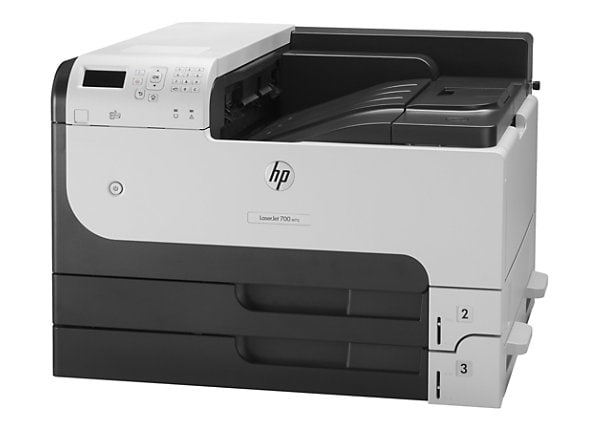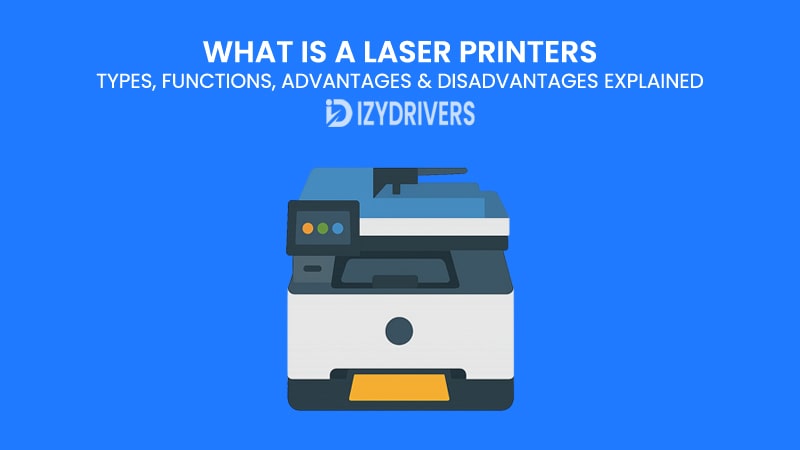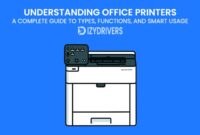For many people, printing is something they don’t think much about until they need it. You hit “Print,” expect the job to be done in seconds, and move on with your day. Behind that simple action, however, lies a complex machine built for speed, precision, and efficiency — and for decades, the laser printers has been the go-to choice for homes, schools, and businesses alike.
The first laser printer appeared in the 1970s, quickly gaining popularity because it could handle high-volume printing far better than older technologies. Unlike inkjet printers that spray liquid ink onto paper, a laser printer uses static electricity, laser beams, and toner powder to produce sharp, smudge-free prints at impressive speeds. This combination of speed and quality made laser printers a standard in offices around the world.
Today, whether you’re printing invoices, reports, school assignments, or even small-scale marketing materials, the laser printer remains one of the most reliable tools you can have. But what exactly makes it different from other printers? How does it work? And what are the real advantages — and drawbacks — of using one?
In this guide, we’ll explore the types, functions, and pros and cons of laser printers so you can decide whether it’s the right choice for your needs.
What is a Laser Printer
A laser printer is a type of printer that uses a laser beam to create high-quality text and graphics on paper. Instead of spraying liquid ink like an inkjet printer, it relies on toner — a fine powder — and static electricity to form precise images. The process might sound technical, but the outcome is straightforward: clean, crisp, and fast printing for everything from text documents to simple graphics.
When you send a file to print, the laser printer translates digital information into a pattern using its laser beam. This pattern is then transferred onto a drum unit, where electrically charged toner sticks to the areas defined by the laser. As the paper passes through, the toner is fused onto the surface using heat and pressure. The result is a permanent, smudge-resistant print in just seconds.
One of the main reasons people choose a this Home Printers is its reliability in handling large print volumes. Offices, schools, and businesses often rely on them because they can run thousands of pages each month without frequent maintenance or ink replacement. That’s why, even with the rise of digital tools, the laser printer remains a critical piece of equipment for anyone who needs consistent and professional-looking documents.
Another benefit is speed. While inkjet printers work well for occasional use or photo printing, they often struggle with bulk jobs. A laser printer can produce dozens of pages per minute, making it ideal for environments where time matters. Combined with its cost efficiency over time, it becomes clear why this technology has lasted for decades and continues to evolve with modern features like wireless printing and energy-saving modes.
Types of Laser Printers
Choosing the right laser printer depends on understanding the different types available. Each one is designed for specific needs, whether you’re printing at home, in a small office, or in a busy corporate environment. Let’s break down the main categories and what makes each one unique.
Monochrome Laser Printers

A monochrome laser printer prints only in black and white, making it the most cost-effective option for people who primarily need text documents. They are widely used in schools, offices, and businesses where color printing is unnecessary.
These printers excel in speed and efficiency. Because they use only one toner cartridge, maintenance costs are lower, and printing thousands of pages each month becomes affordable. If your printing needs are mostly reports, letters, or academic papers, a monochrome laser printer is often the smartest choice.
Color Laser Printers

For presentations, marketing materials, or any documents requiring visual impact, a color laser printer steps in. It uses multiple toner cartridges — typically cyan, magenta, yellow, and black — to produce vibrant, full-color prints.
Although color laser printers are more expensive to purchase and maintain than monochrome models, they deliver professional-quality documents quickly. Businesses often invest in them to save outsourcing costs for printing brochures or flyers while keeping turnaround times fast.
Multifunction Laser Printers (MFPs)

A multifunction laser printer combines printing, scanning, copying, and sometimes faxing into one device. This all-in-one approach saves space while providing several office essentials in a single machine.
MFPs are popular in offices where convenience and cost savings matter. Instead of buying separate devices, businesses can handle all their document needs with one high-performance laser printer, streamlining workflows and reducing clutter.
Compact/Home Laser Printers

Not everyone needs a large, heavy-duty printer. Compact laser printers are designed for personal or home-office use, offering smaller footprints without sacrificing print quality.
They’re perfect for students, freelancers, or remote workers who need reliable printing without spending too much. Many models also come with wireless connectivity, allowing you to print from laptops, tablets, or smartphones easily.
Enterprise/High-Volume Laser Printers

At the other end of the spectrum are enterprise laser printers, built for businesses that print thousands of pages daily. These machines offer high-capacity paper trays, extra-fast printing speeds, and robust security features for sensitive documents.
Large corporations, government offices, and print shops often rely on these printers because downtime isn’t an option. A high-volume laser printer can run continuously while keeping costs per page low over time.
Laser Printer Types Comparison Table
| Laser Printer Type | Print Speed | Cost Level | Best For | Color Capability |
|---|---|---|---|---|
| Monochrome Laser Printer | Fast (20–40 ppm) | Low | Schools, offices, text documents | Black & White Only |
| Color Laser Printer | Moderate to Fast (15–30 ppm) | Medium to High | Marketing materials, presentations | Full Color Printing |
| Multifunction Laser Printer (MFP) | Moderate (20–30 ppm) | Medium | Small to medium offices, all-in-one tasks | Black & White or Color |
| Compact/Home Laser Printer | Moderate (15–25 ppm) | Low to Medium | Students, home offices, remote workers | Black & White or Color |
| Enterprise/High-Volume Printer | Very Fast (40+ ppm) | High | Large corporations, print shops, enterprises | Black & White or Color |
Functions of a Laser Printer
Modern laser printers do far more than simply put text on paper. Over the years, they have evolved into powerful, feature-rich devices designed to handle everything from bulk printing to secure document management. Understanding these core functions helps users choose the right printer and use it to its full potential.
Below are the primary functions that make a laser printer an essential tool in homes, schools, and workplaces.
High-Speed Printing for Large Volumes
One of the biggest advantages of a laser printer is its speed. These machines can handle dozens of pages per minute, making them ideal for high-volume environments like offices or schools.
Unlike inkjet printers that slow down with complex documents, a laser printer maintains consistent performance even under heavy workloads. This means businesses can save time while meeting tight deadlines, all without compromising print quality.
Consistent and Professional Print Quality
Another reason people rely on laser printers is the sharp, professional output they deliver. Text comes out crisp and easy to read, while graphics remain clean and smudge-free because toner is fused permanently onto the page using heat.
For businesses dealing with contracts, reports, or marketing materials, this level of quality creates a professional impression and ensures documents look polished and long-lasting.
Duplex Printing for Cost and Paper Savings
Many modern laser printers support duplex printing, which automatically prints on both sides of the paper. This simple yet effective feature helps reduce paper consumption by up to 50%, cutting costs and supporting eco-friendly initiatives.
For offices trying to balance productivity with sustainability, duplex printing offers a practical solution without sacrificing speed or convenience.
Network and Wireless Connectivity
Today’s workplaces demand flexibility, and modern laser printers deliver with features like Wi-Fi, Ethernet, and even Bluetooth connectivity. Multiple users can connect to the same printer without cables, and many devices now support mobile printing directly from smartphones or tablets.
This functionality streamlines workflows, allowing employees to print on the go while keeping productivity high and downtime low.
Security Features for Sensitive Documents
With the rise of data privacy concerns, some laser printers now come with security features such as PIN printing, data encryption, and user authentication. These tools ensure that only authorized individuals can access confidential documents once they’re printed.
Industries like finance, healthcare, and law often rely on these features to protect sensitive information while maintaining fast, reliable printing capabilities.
Laser Printer Functions Summary Table
| Function | Description | Key Benefit |
|---|---|---|
| High-Speed Printing | Prints dozens of pages per minute without compromising quality. | Saves time for bulk printing tasks. |
| Professional Print Quality | Produces sharp, smudge-free text and graphics with toner-based printing technology. | Ensures professional-looking documents. |
| Duplex Printing | Automatically prints on both sides of the paper. | Reduces paper use and saves costs. |
| Network & Wireless Connectivity | Offers Wi-Fi, Ethernet, and mobile printing support. | Enables printing from multiple devices easily. |
| Security Features | PIN printing and data encryption for sensitive documents. | Protects confidential information. |
Advantages of Laser Printers
While many types of printers exist, laser printers continue to stand out for their efficiency, reliability, and cost-effectiveness. Whether you’re running a business, managing a classroom, or working from home, the advantages of using a laser printer can significantly improve your workflow. Let’s explore these benefits in detail.
High Printing Speed and Efficiency
Speed is one of the strongest selling points of a laser printer. These machines can produce dozens of pages per minute, making them ideal for high-volume printing environments.
Unlike inkjet printers that slow down with heavy workloads, a laser printer keeps the pace steady, delivering large print jobs quickly and consistently. For businesses dealing with time-sensitive tasks, this speed can dramatically reduce waiting times and improve productivity.
Lower Cost Per Page
While a laser printer often costs more upfront than an inkjet model, its long-term savings are significant. Toner cartridges last much longer than ink cartridges, meaning fewer replacements and lower costs per printed page over time.
This makes laser printers especially attractive to offices and schools where printing thousands of pages each month is common. The initial investment quickly pays off when you factor in reduced maintenance and supply costs.
Sharp and Durable Print Quality
Another major advantage of a laser printer is the superior quality of its prints. Text appears sharp, professional, and resistant to smudging because toner powder is fused directly onto the page using heat.
This durability makes laser printers perfect for documents like contracts, reports, and presentation materials, where professional appearance and long-lasting quality matter.
High-Volume Capability
For organizations with heavy printing demands, a laser printer is built to handle large workloads without frequent breakdowns. Many models can handle thousands of pages per month, thanks to high-capacity trays and robust internal components.
This reliability means less downtime, fewer service interruptions, and smoother day-to-day operations, especially in busy environments like corporate offices or academic institutions.
Energy Efficiency in Modern Models
Newer laser printer models are designed with energy-saving features such as automatic sleep modes and eco-friendly toner options. These innovations help reduce power consumption without compromising performance.
Businesses looking to lower operational costs while supporting sustainability efforts can benefit greatly from these eco-conscious designs, making modern laser printers a smarter long-term investment.
Advantages of Laser Printers: Quick Summary Table
| Advantage | Description | Key Benefit |
|---|---|---|
| High Printing Speed | Prints dozens of pages per minute without slowing down. | Saves time for bulk printing tasks. |
| Lower Cost Per Page | Toner cartridges last longer than ink cartridges. | Reduces long-term printing costs. |
| Sharp and Durable Print Quality | Produces smudge-free, professional-looking text and graphics. | Ensures quality and longevity. |
| High-Volume Capability | Handles thousands of pages per month reliably. | Ideal for busy offices and schools. |
| Energy Efficiency | Features like sleep mode and eco-toner reduce power use. | Lowers operational costs sustainably. |
Disadvantages of Laser Printers
While laser printers offer many advantages, they’re not perfect for every situation. Before investing in one, it’s important to understand the potential downsides so you can decide whether the benefits outweigh the drawbacks for your specific needs.
Below are the most common disadvantages of using a laser printer in homes, schools, and offices.
Higher Initial Purchase Cost
One of the first things users notice about a laser printer is the upfront cost. Compared to inkjet models, the purchase price of a laser printer — especially color or multifunction models — can be significantly higher.
For small businesses or individuals on a tight budget, this initial investment might feel intimidating. However, it’s worth noting that the lower long-term costs often offset the steep purchase price over time.
Not Ideal for High-Quality Photo Printing
A laser printer excels at producing sharp text and simple graphics, but it isn’t the best choice for professional photo printing. Inkjet printers still dominate when it comes to vibrant, high-resolution images suitable for photography or design work.
If your main goal is printing photos with rich color depth and fine detail, a laser printer may leave you disappointed compared to a specialized photo inkjet printer.
Bulky Size and Space Requirements
Many laser printers, especially enterprise or high-volume models, are large and heavy. They require significant space for setup and operation, which can be an issue in small offices or home environments with limited room.
While compact laser printers exist, they often lack some advanced features or high-volume capabilities found in larger models, creating a trade-off between size and performance.
Higher Cost of Toner Replacements
Although toner cartridges last longer than ink cartridges in printer, they come with a higher price tag. Replacing multiple toner cartridges for color laser printers can quickly add up, especially for users with frequent printing needs.
For businesses or individuals who don’t print in bulk, the cost of replacing toner may outweigh the printer’s long-term efficiency benefits.
Sensitive to Heat and Power Consumption
Because laser printers use heat to fuse toner onto paper, they consume more electricity than inkjet printers. Some models can become warm during heavy use, which might be a concern in small or poorly ventilated spaces.
Modern laser printers often include energy-saving modes, but power consumption is still something to consider, especially for eco-conscious users.
Disadvantages of Laser Printers: Quick Summary Table
| Disadvantage | Description | Impact on Users |
|---|---|---|
| Higher Initial Purchase Cost | Costs more upfront than most inkjet printers. | May deter small businesses or individuals. |
| Limited Photo Printing Quality | Not ideal for high-resolution, vibrant photo prints. | Less suitable for photographers/designers. |
| Bulky Size | Requires more physical space for installation and operation. | Problematic in small offices or homes. |
| Expensive Toner Replacements | Toner cartridges are costly despite long lifespan. | Raises long-term maintenance expenses. |
| Higher Power Consumption | Uses heat to fuse toner, consuming more electricity than inkjets. | May increase operational costs over time. |
Laser Printers vs. Other Printer Types
Comparing laser printers with other printer technologies helps readers quickly understand the strengths and weaknesses of each option. Each printer type serves a different purpose, so knowing where a laser printer stands will guide you toward the right choice for home, school, or office use.
Laser Printers vs. Inkjet Printers
When people look for a printer, they often start by comparing laser printers and inkjet printers. The main difference lies in printing speed, long-term costs, and image quality. Laser printers excel in speed and cost efficiency, handling large printing volumes without frequent cartridge changes.
Inkjet printers, on the other hand, are known for superior photo quality and lower upfront costs. If you only print occasionally or want high-resolution images, an inkjet printer might be enough. But for text-heavy documents and high-volume needs, laser printers are usually the smarter investment over time.
Laser Printers vs. All-in-One Printers
All-in-One printers combine printing, scanning, copying, and faxing in a single device. While some laser printers now come as multifunction printers (MFPs), many all-in-one models use inkjet technology because it keeps the initial price low.
For home users who need occasional scanning or copying, an all-in-one inkjet printer can be more affordable. Businesses, however, often choose laser MFPs for faster print speeds and lower cost per page, especially when document handling efficiency matters.
Laser Printers vs. Photo Printers
Photo printers are designed specifically for high-quality photo printing with accurate colors and fine details. Compared to them, laser printers focus on sharp text and professional-looking documents rather than photo realism.
If your goal is to print family photos or artistic projects, a photo printer will outperform a laser printer every time. But for standard office use, marketing materials, or reports, laser printers deliver faster prints at a much lower cost.
Laser Printers vs. Dot Matrix Printers
Dot matrix printers may seem outdated, but they still exist in industries requiring carbon copies or continuous forms. They use impact printing technology, which is noisy and slow compared to laser printers.
Modern offices rarely rely on dot matrix printers anymore because laser printers offer cleaner results, better speed, and quieter operation. Dot matrix printers remain limited to niche environments like logistics or industrial settings.
Laser Printers vs. 3D Printers
Comparing laser printers with 3D printers highlights completely different goals. Laser printers produce documents, reports, and business materials, while 3D printers create physical objects for prototyping or manufacturing.
Because the technologies serve separate markets, most users will never need to choose between the two. But it shows how far printing technology has evolved beyond traditional paper printing.
Laser Printers vs. Thermal Printers
Thermal printers dominate in retail, shipping, and labeling tasks. They use heat-sensitive paper instead of ink or toner, making them ideal for receipts, barcodes, and packaging labels.
A laser printer is better suited for documents, reports, and administrative work. Thermal printers remain a niche choice where labels and receipts are the priority rather than multi-page documents.
Laser Printers vs. Portable Printers
Portable printers are compact, battery-powered devices designed for professionals who travel often. They trade speed and volume for mobility and convenience.
While laser printers are larger and not portable, they win in speed, durability, and cost efficiency. Businesses and schools stick with laser printers because portable models cannot handle high-volume tasks economically.
Printer Type Comparison Table: Laser vs. Others
| Printer Type | Speed | Print Quality | Cost Efficiency | Main Use Case | Portability |
|---|---|---|---|---|---|
| Laser Printer | Very Fast | Sharp text, good graphics | Low cost per page | Offices, schools, businesses | Low |
| Inkjet Printer | Moderate | Excellent for photos | Higher ink cost | Home, photo printing | Low |
| All-in-One Printer | Varies by model | Good for everyday tasks | Moderate | Home, small offices | Low |
| Photo Printer | Slow to moderate | Professional photo quality | Higher cost per page | Photography, creative projects | Low |
| Dot Matrix Printer | Very Slow | Low resolution | Low but outdated tech | Industrial, carbon forms | Low |
| 3D Printer | Slow (object-based) | Not for paper printing | Varies by materials | Prototyping, manufacturing | Low |
| Thermal Printer | Fast for labels | Limited to labels/receipts | Moderate | Retail, logistics | Low |
| Portable Printer | Moderate | Good for simple documents | Higher cost per page | Travel, on-the-go professionals | High |
Conclusion
Laser printers remain one of the most reliable and cost-effective solutions for businesses, schools, and home offices that handle large volumes of text-based documents. Their speed, durability, and low cost per page make them an excellent long-term investment for anyone who values efficiency over photo realism.
While inkjet printers and other specialized printer models have their strengths—especially in photo printing or portable use—laser printers stand out for professional-quality documents at scale. Understanding the differences between printer types ensures you can choose the right device for your printing needs, saving both time and money over the long run.
FAQs About Laser Printers
What is the main advantage of a laser printer?
The biggest advantage of a laser printer is its speed and cost efficiency. It can print hundreds of pages quickly without frequent cartridge changes, making it ideal for offices and schools.
Are laser printers good for photo printing?
Not really. Laser printers focus on text clarity and speed. For high-resolution photos or creative projects, a dedicated photo printer or inkjet printer works better.
How long does a laser printer toner last?
A single toner cartridge in a laser printer can last for thousands of pages, often far longer than inkjet cartridges, which makes it more cost-effective over time.
What is the difference between a laser printer and an all-in-one printer?
An all-in-one printer can scan, copy, and fax in addition to printing. Some all-in-one printers use laser technology, while many home models use inkjet systems for lower upfront costs.
Is a laser printer worth it for home use?
If you print frequently or need fast, professional-quality documents, a laser printer is worth the investment. For occasional photo printing, an inkjet might be more practical.




